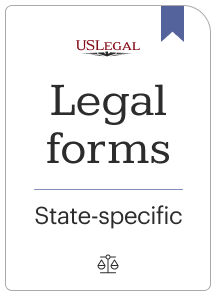

An addendum is a thing to be added; an addition. For example, it may be used to add supplemental terms or conditions to a contract or make corrections or supply omissions to a document. An addendum is often used to supply additional terms to standardized contracts, such as leases. Addendum is singular; the plural form is addenda.
Real propertysales agreements often have addenda (plural of addendum) as the buyer and seller negotiatefine points (how payments will be made, what appliances will be included, date of transfer oftitle, the terms of financing by the seller and the like). Although often they are not, addendashould be signed separately and attached to the original agreement so that there will be noconfusion as to what is included or intended.
The Kentucky Addendum to Real Estate Purchase and Sale Agreement is a legal document that supplements the primary contract governing the sale and purchase of real estate in the state of Kentucky. This addendum is designed to address specific issues or provisions that may not have been specified or adequately covered in the original agreement. The Kentucky Addendum may contain various types, depending on the specific needs and circumstances of the transaction. Some different types of Kentucky Addendum to Real Estate Purchase and Sale Agreement include: 1. Financing Addendum: This addendum may be used to outline the financing terms and conditions of the purchase, such as the type and amount of loan, interest rate, down payment, and other financial details. It may also specify any contingency clauses related to financing approval or the buyer's ability to secure a loan. 2. Inspection Addendum: This type of addendum addresses the inspection process and may detail the responsibilities of both the buyer and the seller. It may include provisions related to the timeframe for conducting inspections, the cost of inspections, and the resolution of any issues identified during the inspection. 3. Appraisal Addendum: An appraisal addendum is used when the buyer intends to obtain an appraisal of the property to determine its fair market value. It may specify the deadline for completing the appraisal, the cost of the appraisal, and the consequences if the appraised value is different from the agreed-upon purchase price. 4. Closing Addendum: This addendum is employed when there are specific requirements or conditions surrounding the closing process. It may outline the date and time of the closing, the location of the closing, and any unique provisions that need to be met before the transaction can be completed. 5. Contingency Addendum: A contingency addendum is used when certain conditions must be met for the sale to proceed. For example, if the buyer needs to sell their current property before purchasing the new one, the contingency addendum may specify the timeframe and terms for the sale of the buyer's property. These are just a few examples of the different types of Kentucky Addendum to Real Estate Purchase and Sale Agreement that may be used depending on the circumstances of the transaction. It is crucial for buyers and sellers to carefully review and understand any addenda before signing as they can significantly impact the rights, obligations, and overall terms of the real estate sale.
The Kentucky Addendum to Real Estate Purchase and Sale Agreement is a legal document that supplements the primary contract governing the sale and purchase of real estate in the state of Kentucky. This addendum is designed to address specific issues or provisions that may not have been specified or adequately covered in the original agreement. The Kentucky Addendum may contain various types, depending on the specific needs and circumstances of the transaction. Some different types of Kentucky Addendum to Real Estate Purchase and Sale Agreement include: 1. Financing Addendum: This addendum may be used to outline the financing terms and conditions of the purchase, such as the type and amount of loan, interest rate, down payment, and other financial details. It may also specify any contingency clauses related to financing approval or the buyer's ability to secure a loan. 2. Inspection Addendum: This type of addendum addresses the inspection process and may detail the responsibilities of both the buyer and the seller. It may include provisions related to the timeframe for conducting inspections, the cost of inspections, and the resolution of any issues identified during the inspection. 3. Appraisal Addendum: An appraisal addendum is used when the buyer intends to obtain an appraisal of the property to determine its fair market value. It may specify the deadline for completing the appraisal, the cost of the appraisal, and the consequences if the appraised value is different from the agreed-upon purchase price. 4. Closing Addendum: This addendum is employed when there are specific requirements or conditions surrounding the closing process. It may outline the date and time of the closing, the location of the closing, and any unique provisions that need to be met before the transaction can be completed. 5. Contingency Addendum: A contingency addendum is used when certain conditions must be met for the sale to proceed. For example, if the buyer needs to sell their current property before purchasing the new one, the contingency addendum may specify the timeframe and terms for the sale of the buyer's property. These are just a few examples of the different types of Kentucky Addendum to Real Estate Purchase and Sale Agreement that may be used depending on the circumstances of the transaction. It is crucial for buyers and sellers to carefully review and understand any addenda before signing as they can significantly impact the rights, obligations, and overall terms of the real estate sale.